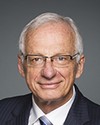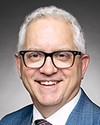I call this meeting to order.
Welcome to meeting number 12 of the House of Commons Standing Committee on Indigenous and Northern Affairs. I would like to start by acknowledging that I am joining you today from the traditional territory of the Haudenosaunee, Anishinabe and Chonnonton nations.
Pursuant to the order of reference of April 20, 2020, the committee is meeting for the purpose of receiving evidence concerning matters related to the government’s response to the COVID-19 pandemic. Today’s meeting is taking place by video conference, and the proceedings will be made available via the House of Commons website.
During this meeting, the webcast will always show the person speaking rather than the entire committee. To facilitate the work of our interpreters and ensure an orderly meeting, I would like to outline a few of the rules.
Interpretation in this video conference will work very much like in a regular committee meeting. You have the choice at the bottom of your screen of either floor, English or French. To resolve the sound issues raised in recent virtual committee meetings and ensure clear audio transmission, we ask those who wish to speak during meetings to set your interpretation language as follows: If speaking in English, please ensure you are on the English channel, and if speaking in French, please ensure you are on the French channel. As you are speaking, if you plan to alternate from one language to the other, you will also need to switch the interpretation channel so it aligns with the language you are speaking. You may also want to allow for a short pause when switching languages.
Before speaking, please wait until I recognize you by name. When you are ready to speak, you can either click on the microphone icon to activate your mike, or you can hold down the space bar while you are speaking. When you release the bar, your mike will mute itself, just like a walkie-talkie.
This is a reminder that all comments by members and witnesses should be addressed through the chair. Should members need to request the floor outside of their designated time for questions, they should activate their mike and state that they have a point of order. If a member wishes to intervene on a point of order that has been raised by another member, they should use the “raise hand” function. This will signal to the chair your interest in speaking. To do so, you should click on “participants” at the bottom of your screen to the left of the globe, and when the list pops up, you will see next to your name that you can click on “raise hand”.
When speaking, please speak slowly and clearly. When you are not speaking, your mike should be on mute. The use of headsets is strongly encouraged. If you have earbuds with a microphone, please hold the microphone near your mouth when you are speaking to boost the sound quality for our interpreters.
Should any technical challenges arise, for example, in relation to interpretation or if you are accidentally disconnected, please advise the chair or clerk immediately, and the technical team will work to resolve them. Please note that we may need to suspend during these times as we need to ensure all members are able to participate fully.
Before we get started, can everyone click on their screen, in the top right-hand corner, and ensure they are on gallery view? With this view, you should be able to see all the participants in a grid view. It will ensure that all video participants can see one another.
During this meeting, we follow the same rules that usually apply to opening statements and the rounds for questioning of witnesses during our regular meetings. Each witness will have up to five minutes for an opening statement, followed by the usual rounds of questions from members. I'll be a little tough on the timing to ensure we can go as far through our cycle of questioners as possible.
For both the witnesses about to speak, I'll hold you as close to five minutes as I can, and similarly for questioners, there will be six-, five- and 2.5-minute rounds.
Welcome to the witnesses on our first panel. From the Canadian Council for Aboriginal Business, we have Tabatha Bull, who is president and chief executive officer. From the National Aboriginal Capital Corporations Association, we have Shannin Metatawabin, the chief executive officer, and from the Northern Air Transport Association, we have Sébastien Michel, member of the board of directors.
Ms. Bull, please start now. You have five minutes for your presentation.



